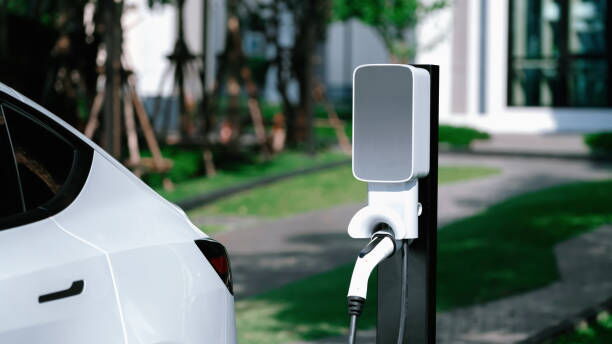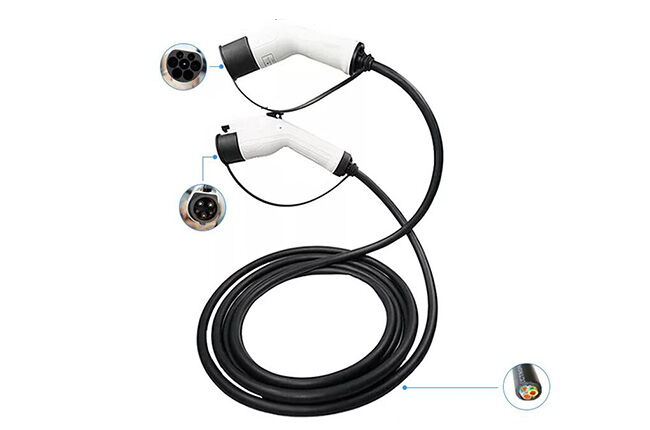As electric vehicles (EVs) continue to gain popularity, understanding the different charging options available is essential for both new and experienced EV owners. Among the most widely used charging methods is Mode 3 charging, which offers a balance of speed, safety, and accessibility.
This comprehensive guide explores what Mode 3 charging is, how it works, its advantages and disadvantages, and how it compares to other charging modes like Mode 2 and Mode 4. Whether you're considering installing a home charging station or frequently rely on public charging points, this article will help you make an informed decision.

Mode 3 charging is the most common type of EV charging found in public spaces, including shopping centers, workplaces, and dedicated charging stations. Unlike basic home charging (Mode 1 or 2), Mode 3 uses a dedicated charging station that provides faster and safer power delivery.
Key Features of Mode 3 Charging:
Uses alternating current (AC) power, typically ranging from 3.7 kW to 22 kW.
Requires a specially designed charging cable (Mode 3 cable) that connects the EV to the charging station.
Includes advanced safety features, such as real-time monitoring and automatic shutoff in case of electrical faults.
Supports communication between the charger and the vehicle to optimize charging efficiency.
A Mode 3 charging cable is an essential component for EV charging, designed to connect an electric vehicle to a dedicated charging station. These cables are built with safety mechanisms to prevent electrical hazards and ensure efficient power transfer.

Connection: The cable links the charging station to the EV’s charging port.
Communication: The cable and charging station communicate with the vehicle to determine the optimal charging rate.
Safety Checks: The system continuously monitors temperature, voltage, and current to prevent overheating or electrical surges.
Charging: Once all safety checks are complete, the vehicle charges at the maximum supported rate.
Mode 3 cables come with different plug types, depending on regional standards:
Type 1 (SAE J1772): Common in North America and Japan.
Type 2 (Mennekes): Standard in Europe and increasingly adopted worldwide.
GB/T: Used primarily in China.
Mode 3 charging is favored for its balance of speed, safety, and availability. Here’s why it’s a popular choice among EV owners:
While not as rapid as DC fast charging (Mode 4), Mode 3 is significantly faster than standard household outlets (Mode 1 & 2).
Typical charging speeds:
3.7 kW (16A, single-phase): ~15-20 miles of range per hour.
7.4 kW (32A, single-phase): ~30-40 miles of range per hour.
22 kW (32A, three-phase): ~60-80 miles of range per hour (for compatible EVs).
Real-time monitoring of electrical current, temperature, and voltage.
Automatic shutoff in case of faults, reducing fire risks.
Ground fault protection to prevent electric shocks.
Mode 3 chargers are the most common public charging stations worldwide.
Found in:
Shopping malls
Office parking lots
Highway rest stops
Residential complexes
Many Mode 3 stations support smart scheduling, allowing users to charge during off-peak hours for lower electricity costs.
Some models offer remote monitoring via smartphone apps.
Despite its benefits, Mode 3 charging has some limitations:
While public Mode 3 stations are widespread, installing one at home can be expensive.
Costs include:
Charging unit: €400 – €1,500+
Professional installation: €200 – €1,000 (depending on electrical upgrades needed).
Unlike a standard wall outlet (Mode 2), a Mode 3 charger needs a professionally installed circuit with:
Sufficient amperage (typically 32A or higher).
Proper grounding and safety switches.
Mode 3 is not suitable for ultra-fast charging—it can take several hours to fully charge an EV.
Example charging times (for a 60 kWh battery):
3.7 kW: ~16 hours
7.4 kW: ~8 hours
22 kW: ~3 hours (if the car supports three-phase charging).
To better understand where Mode 3 fits in, let’s compare it to other charging modes:
|
Feature |
Mode 2 (Portable Charger) |
Mode 3 (Dedicated AC Charger) |
Mode 4 (DC Fast Charger) |
|
Power Source |
Standard household socket |
Dedicated charging station |
High-power DC station |
|
Charging Speed |
Slow (2.3–3.7 kW) |
Medium (3.7–22 kW) |
Very Fast (50–350 kW) |
|
Installation |
Plug-and-play (no setup) |
Requires professional install |
Commercial use only |
|
Safety Features |
Basic protection |
Advanced monitoring |
Ultra-high safety protocols |
|
Best For |
Emergency charging |
Home & public charging |
Highway travel & rapid top-ups |
|
Cost |
€200–€600 |
€400–€2,000 |
€0.30–€0.80 per kWh (public use) |
Mode 2: Best for occasional use when no other option is available.
Mode 3: Ideal for daily home charging & public stations.
Mode 4: Necessary for long trips & quick recharges.
Mode 3 charging is the sweet spot for most EV owners—offering a good balance between speed, safety, and availability. While it’s not as fast as Mode 4 (DC fast charging), it’s far more efficient than Mode 1 or 2.
Homeowners who want faster charging than a standard outlet.
Businesses & workplaces installing EV charging for employees.
Public charging networks looking for a reliable AC charging solution.
Consider Mode 4 If:
You frequently take long road trips and need ultra-fast charging.
Your EV supports high-power DC charging (e.g., Tesla Superchargers, CCS, or CHAdeMO).
Mode 3 charging is the backbone of today’s EV infrastructure, providing a safe, efficient, and widely available way to power electric vehicles. While it requires an initial investment for home installation, its long-term benefits make it a smart choice for most EV drivers.
As charging technology evolves, Mode 3 will remain a key solution for everyday charging needs—bridging the gap between slow home charging and ultra-fast public DC stations.
Would you like recommendations on the best Mode 3 chargers for home use? Let us know in the comments!